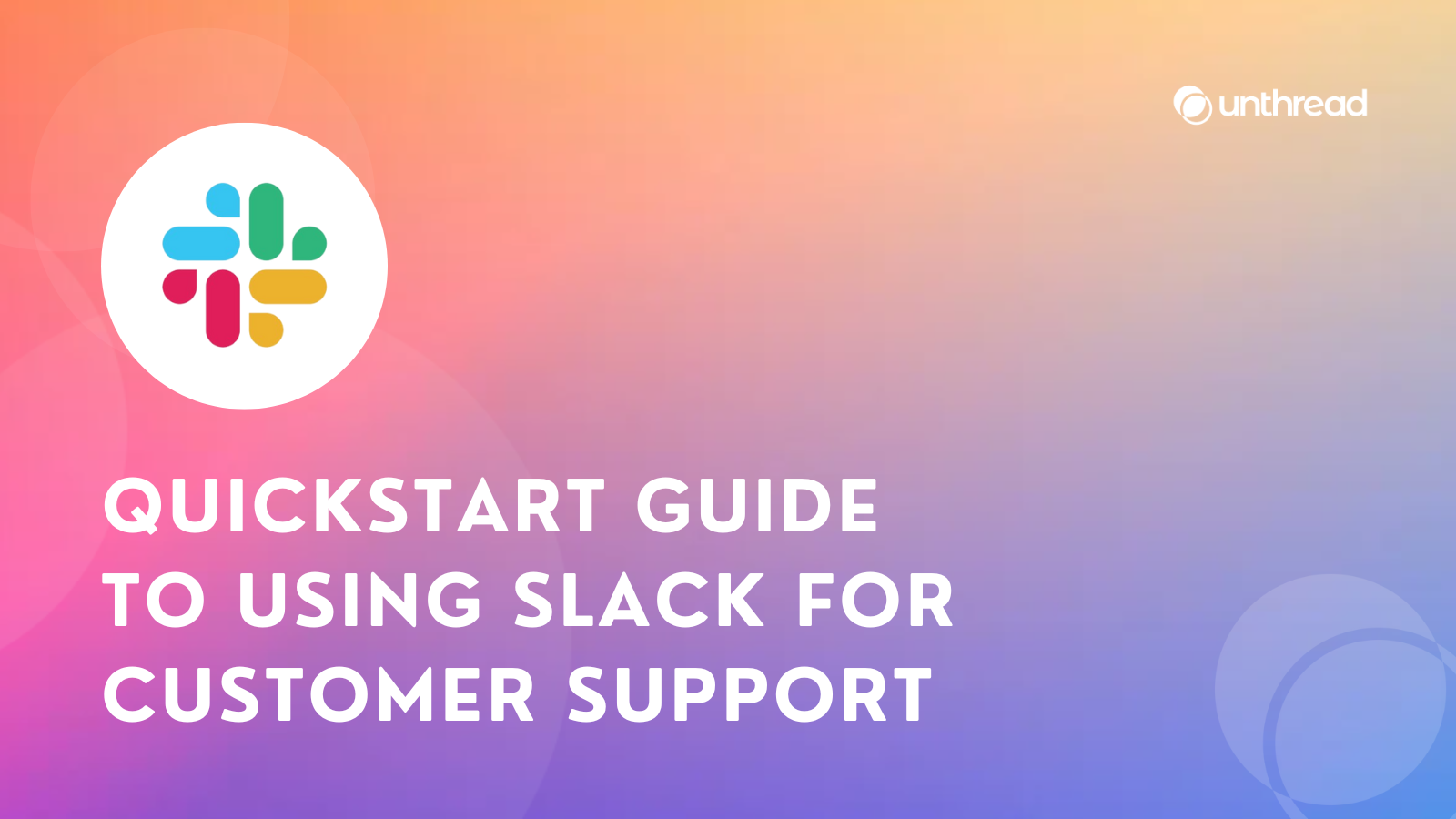Quickstart Guide to Using Slack for Customer Support
Slack is a great new way to reach customers in real-time on the app that they use most often. Using the right tools will keep customers happier and keep them for longer.

When Slack was first founded in 2012, its goal was to be a "Searchable Log of All Conversation and Knowledge". In the first 24 hours since launch in August 2013, Slack garnered 8,000 customers who were looking for a live chat platform for real-time collaboration at their company. Less than 2 years later in 2015, it boasted 200,000 paid subscribers and nearly a million daily active users. Today, Slack is used by over 600,000 companies across 150 countries.
In June 2020, Slack launched Slack Connect, a powerful way for companies to collaborate with each other in real-time. Currently, over 100,000 organizations use Slack Connect to talk with partners, customers, vendors, and more.

The benefits of using Slack for support
⏱ Faster response times
People are >60% more likely to respond and respond >80% faster to messages that come into Slack when compared to email. For a full report on responsiveness of Slack vs. email, subscribe above to get access to our publication.
🤝 Dynamic messages and improved collaboration
While emails are inherently static, Slack messages can be dynamic and update in real-time. You can easily upload a file, share a code snippet, and start a video call all from a single message. This is even more powerful when you integrations like Dropbox, Zoom, Figma, and more that let you share content directly without downloading & reuploading files.
🔒 Improved security
Slack reduces the risk of phishing and other cyber attacks by verifying the sender and receiver of each message. Emails can be subject to spoofing and put you at risk of sharing confidential information with a hacker.
🤖 Automation
Slack has a rich ecosystem of over 2,000 apps & integrations that add new automations to your conversations. For example, you can find apps that automatically create support tickets when new messages are created in a shared Slack channel and assign them to team members.
Best practices for using Slack for support
Keep it casual
There's no need for a "Dear so-and-so", or "To whom it may concern" when talking to customers in Slack. Slack is a chat interface, and you should be talking to customers in a chatting context (though still keep it professional!)
Get to the point
People can sometimes be juggling hundreds of Slack channels at a given time, and it's important that they can easily navigate through the noise. Keep your messages poignant with the most important content in your first sentence.
Respond quickly
Slack can be a double-edged sword. While you'll see higher engagement from customers, there is also a higher expectation of quick response times. To prevent messages from getting lost, implement Service Level Agreements (or SLAs) that guarantee response times, and stick to them. The best way to stick to these is to use an app like Unthread for assigning messages and alerting if you take too long to provide customer responses.
Conclusion
Slack is a great new way to reach customers in real-time on the app that they use most often. Once you have the right tools and processes in place, your Slack support can become a competitive advantage that keeps customers happier and keeps them for longer.

